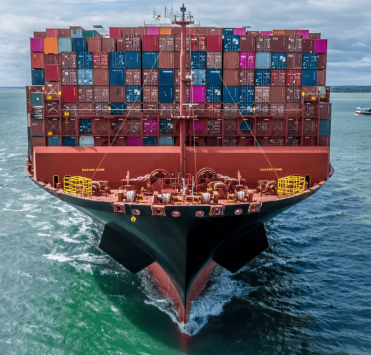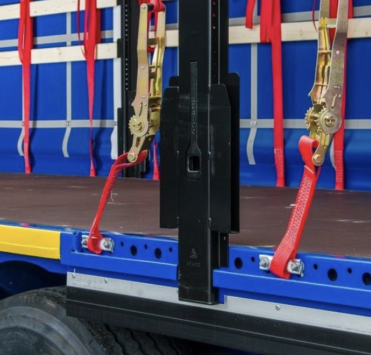Dangerous goods marks: specific details and requirements

Classification and labelling of dangerous goods
In Ukraine, the classification of dangerous goods for transport plays an important role in ensuring the safety of people and the environment. Dangerous goods include substances, materials and articles that pose risks during transport, including potential harm to human health, animals and the environment. These goods are classified into different classes and subclasses based on their physical and chemical properties, types and hazard levels. For example, Class 1 includes explosives, with the exception of Category 1.4S, which are prohibited for air transport under all circumstances. The Law of Ukraine "On Transportation of Dangerous Goods" establishes the legal framework for the transportation of such goods, outlining the organizational, social and economic aspects of the relevant activities.
ADR-1: Explosives
Materials that may cause an explosion. These include explosives, explosive compositions for special applications, flammable agents and solid explosives.
ADR-2: Gases
Presenting a hazard during transport, includes flammable, non-flammable, toxic and oxidising gases. This class covers a wide range of substances, from propane and oxygen to the transport of ammonia and chlorine.
ADR-3: Liquid combustibles
This includes flammable liquids that can cause a fire under normal conditions. The class includes fuels and lubricants such as petrol, diesel and various oils.
ADR-4: Solid combustibles.
Can support combustion under certain conditions. This class is divided into three subgroups: flammable solids, self-flammable and compounds that release flammable gases in contact with water. The carriage of dangerous goods by road must take into account the specific details of each.

ADR-5: Oxidising agents and bleaches
This class includes oxidisers that can increase combustion and bleaches that are used in chemical processes.
ADR-6: toxic and infectious substances
This category includes all groups that can threaten human health: poisons, pathogens.
ADR-7: radioactive materials
Dangerous goods transport services include the transport of materials emitting radiation as well as sources of ionising radiation. Due to the high concentration of radionuclides they require special attention during transport.
ADR-8: corrosive substances
Capable of damaging and destroying the shipping container, therefore require proper selection of transport. These are ADR cargoes, including acids, alkalis and other corrosive substances.
ADR-9: Miscellaneous Dangerous Goods
A category that includes various types of solids and liquids not included in the previous sections.
- In order to correctly mark trucks, containers and tanks with hazard indicators, labels should be affixed to both sides and each end of the container, tank-container or portable tank. In the case of multi-compartment tank-containers or portable tanks carrying two or more hazardous substances, it is mandatory to affix appropriate labels on each side at the location of the compartment concerned. In addition, one placard of each type should be placed on both end faces, ensuring complete labelling.
- Tank trucks, trucks with removable tank-containers carrying dangerous goods in bulk should have appropriate signs on both sides and at the rear. If a tank truck or a detachable tank-container has several compartments and carries several dangerous goods, each compartment shall have an appropriate danger sign attached to it on both sides and one of each type of panel shall also be placed on the rear side. However, where identical placards are required in all compartments, one placard should be placed on each side and at the rear. Where more than one plaque is required for the same compartment, they should be placed next to each other.

For transport units carrying hazardous materials, two tables containing information on dangerous goods are required. These tables should be arranged vertically, one attached to the front and the other to the rear of the transport unit. They should be perpendicular to the longitudinal axis of the transport unit. It is important that these tables are clearly visible to ensure safety.
Additional dangerous goods information tables should be fitted to tankers or transport units carrying hazardous materials. These tables should be positioned parallel to the longitudinal axis of the vehicle. The purpose of these tables is to display the hazard identification number and UN number for each substance being transported. It is very important that these tables are clearly visible to ensure that the dangerous goods being transported are clearly identified.
When transporting hazardous materials in bulk, additional dangerous goods information plates are required along the sides of trucks and containers. These plates, parallel to the longitudinal axis of the truck, should indicate the hazard identification number and UN number assigned to each specific hazardous substance carried in bulk inside the truck or container. It is essential that these tables be easily visible to ensure that the hazards involved are clearly communicated.
Rules and Regulations for the Carriage of Dangerous Goods in Ukraine
In Ukraine, the transport of dangerous goods is regulated by rules that comply with international standards to ensure the safety of such transport. Document No. 1644-III sets out general provisions regarding dangerous goods, classifying them as materials and substances that pose a risk during transport. These dangerous goods are divided into various classes and subclasses, each of which has specific rules for their safe transport.
The transportation of dangerous goods in Ukraine requires specific labelling requirements to effectively communicate potential hazards. Dangerous goods labelling involves the use of special signs and placards to indicate the nature of the hazard present during transport. Understanding the classification and labelling of dangerous goods is essential for all parties involved, including shippers, carriers and emergency responders, to ensure proper handling and response in the event of incidents. Proper labelling not only enhances safety but also facilitates rapid detection and response in emergency situations, reducing the potential impact of accidents.
In the event of emergencies involving dangerous goods in transport in Ukraine, there are established procedures for responding to such situations and ensuring safety. The regulations define safety measures and protocols to mitigate the consequences of emergencies, emphasising the importance of rapid and effective response. The main types of hazards associated with dangerous goods include their potential for explosion, ignition, poisoning or corrosion. By understanding these risks and following established safety measures, transport stakeholders can facilitate the safe movement of dangerous goods.









